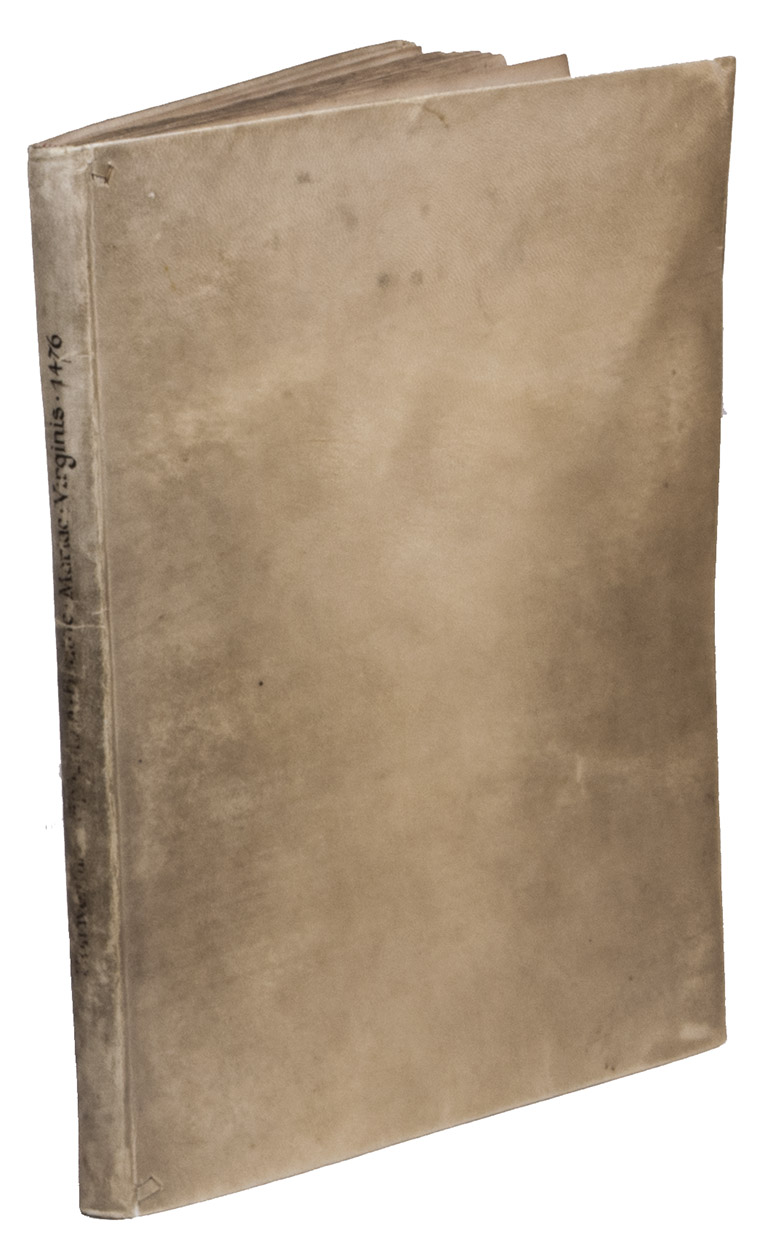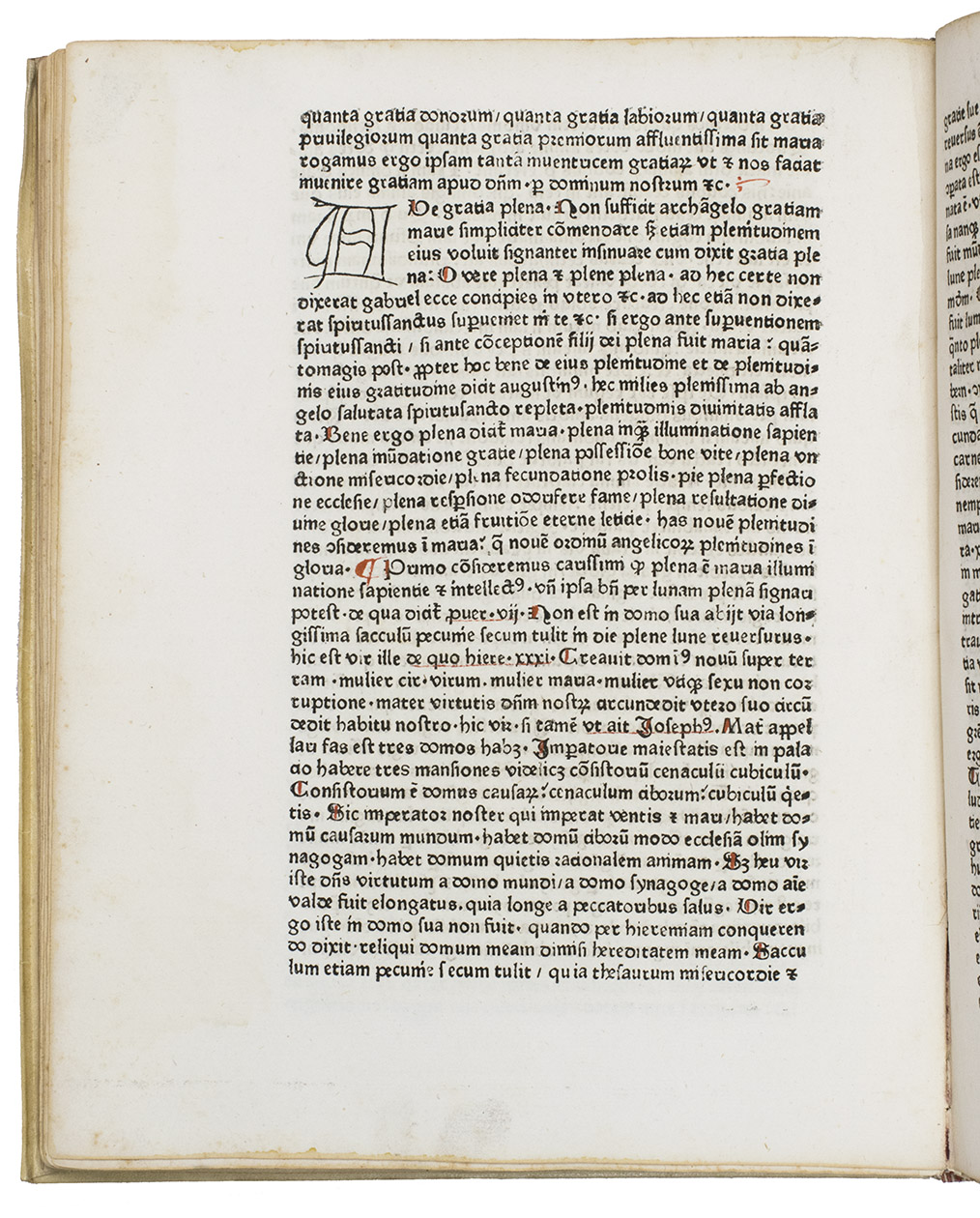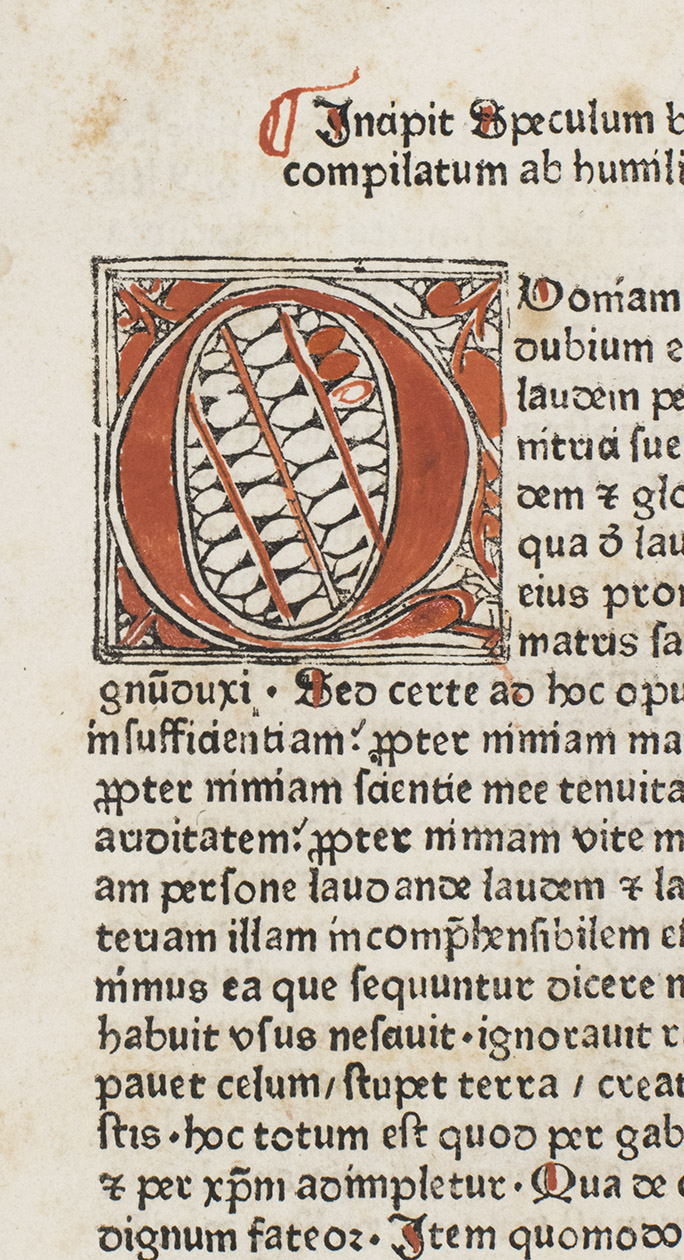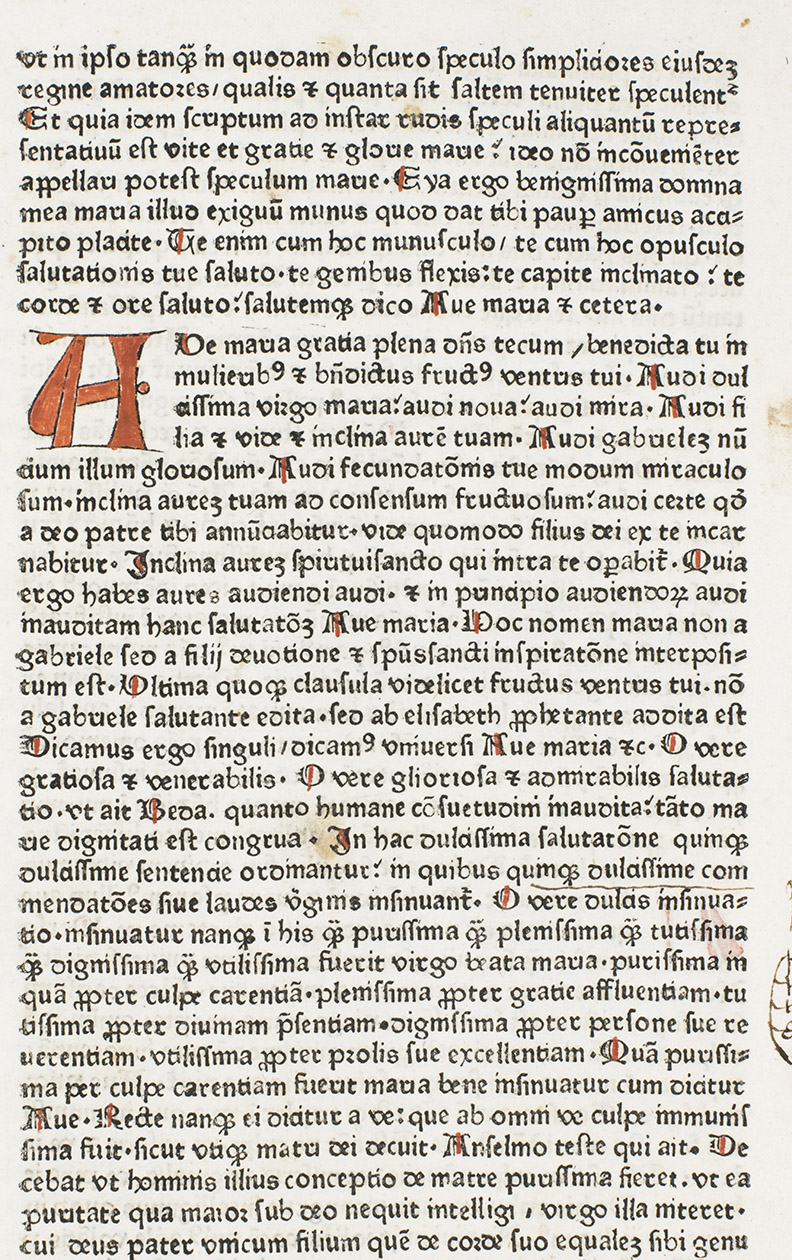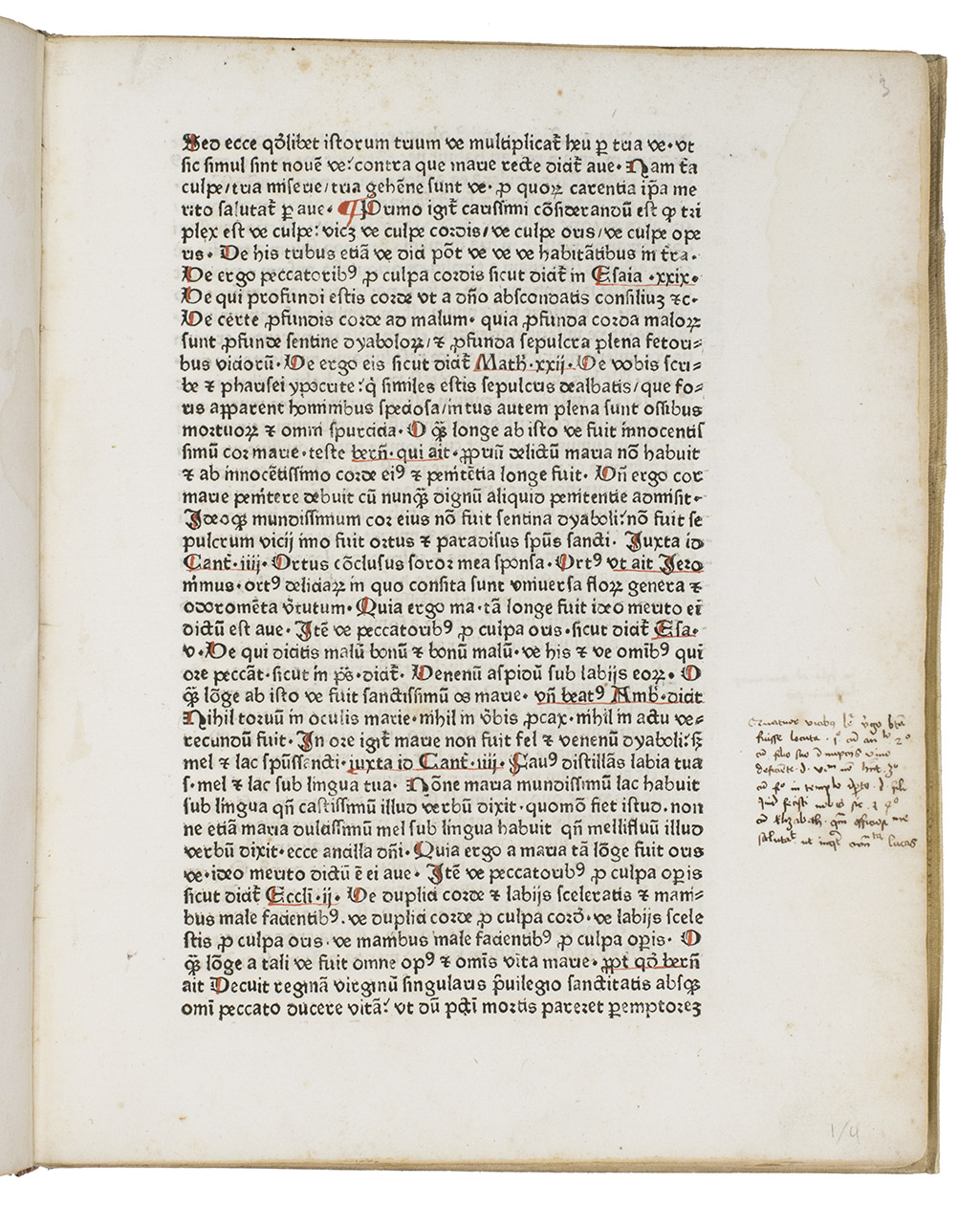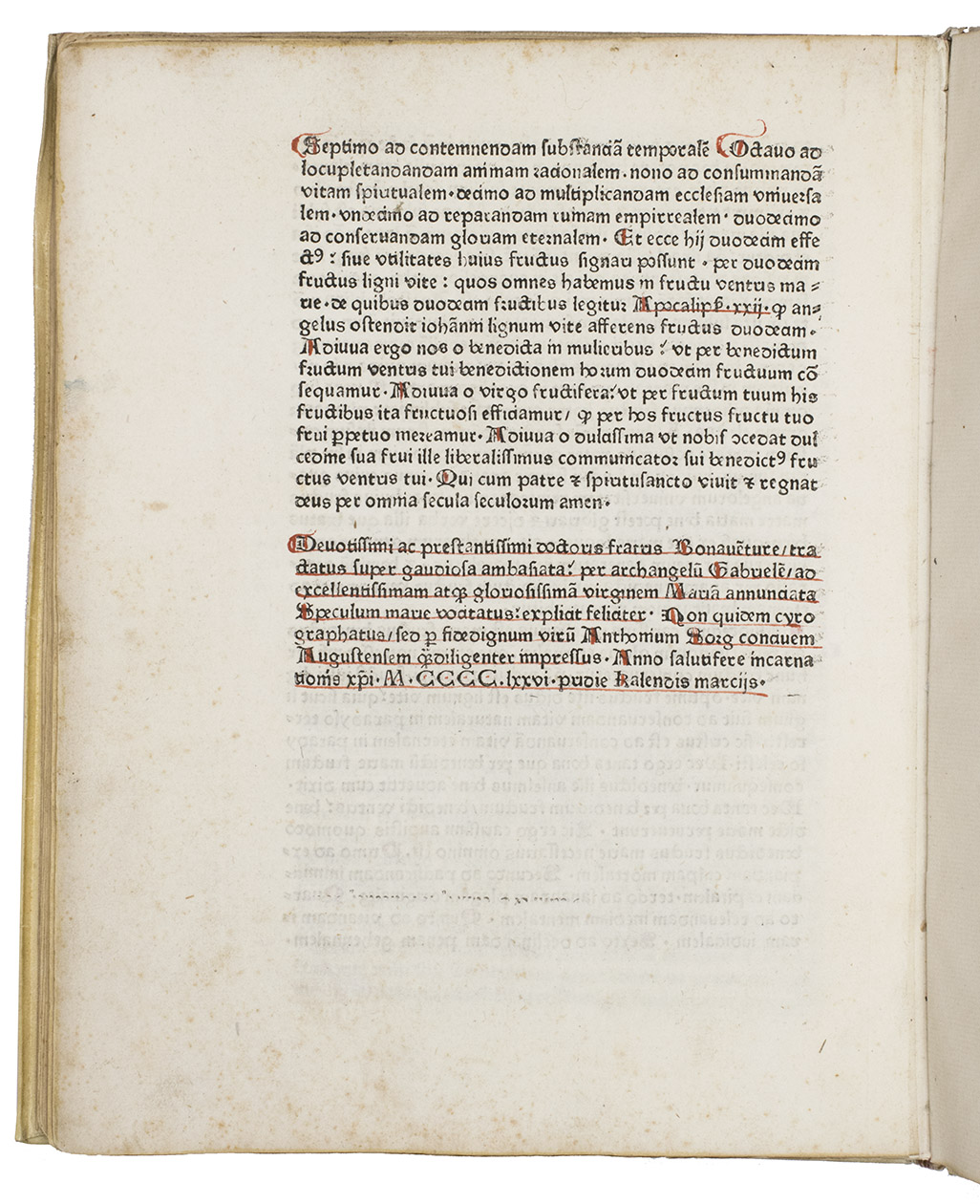BONAVENTURA (pseudo) [= Conradus de SAXONIA].
Speculum beate Marie virginis: compilatum ab humili fratre Bonauentura.
Augsburg, Anton Sorg, 1476. Folio (26.5 x 21.2 cm). Set in a Gothic letter in 40 lines to the page, printed in 1 column. Rubricated throughout. With a large Maiblumen woodcut-initial and 16 smaller initials (of which 11 hand-coloured in red). Modern vellum, with a manuscript title on the spine. [48] ll.
€ 17,500
First edition of this Speculum beate Marie virginis, an early work from the presses of Augsburg printer Anton Sorg (active 1475-1493). The beautiful Sorgs type (type 103) used here was taken over from the Augsburg monastery printers St. Ulrich and Afra and used until 1477. The Mayflower initial "Q" from Sorg's largest alphabet is particularly noteworthy and beautiful. GKW attributes the authorship of this commentary on the Ave Maria to Konrad Holzinger (Holtnicker) von Sachsen, a Franciscan preacher hailing from Braunschweig. In 1247, he began serving as a lecturer at Hildesheim's oldest "Privatstudium" and was simultaneously appointed as the Saxon provincial of his Order. He continued in this role for 16 years until he resigned in 1263. However, he was re-elected as provincial in 1272 and held the position until his passing in 1279 while en route to the General Franciscan Assembly in Assisi, with Bologna serving as his place of demise. Konrad's work was particularly widespread in German-speaking countries and had a major influence on Middle High German literature. Many others' sermons are based on his work. After the Middle Ages, Konrad's fame declined and his work has often been wrongly attributed to the Italian theologian Bonaventura. His Sermones form the bulk of Konrad's work. Today, around 700 of his sermons are known. These were probably written between 1262 and 1272 and have survived in many manuscripts. They are not fully written sermons, but drafts that other clergy could use as the basis for their own sermons. The Speculum Beatae M. Virginis was written in the same period as the Sermones (1262-1272). The content consists of an interpretation of the Hail Mary and a theological reflection on the belief in Mary. The text has long been regarded as an important work and there are approximately 250 manuscripts known.
One of the unique features of Sorg's press was the use of outlined woodcut initials, following the model of medieval manuscripts. A large outlined initial was frequently included at the start of each chapter, with smaller woodcut initials marking divisions within each chapter. Both large and small initials were adorned with colour, as seen in our edition with red. Sorg's utilization of printed outlines for illuminated letters was an unconventional technique.
With the bookplate of the Bibliotheca Philosophica Hermetica on the front paste-down. Several leaves with contemporary handwritten marginals and underlinings. Lacking first and last blank leaves. A few leaves strengthened in the gutter. Some occasional slight soiling and dampstaining. Otherwise in very good condition. BMC II, 343; Goff B 959; GW 4817 (88 copies); HC 3566; ISTC ib00959000; Pellechet 2681; Proctor 1645; USTC 743574 (71 copies). For Sorg see: Albert Schramm - Der Bilderschmuck der Fruhdrucke. Vol. 4: Die Drucke von Anton Sorg in Augsburg (Hiersemann, 1921).
Related Subjects:

